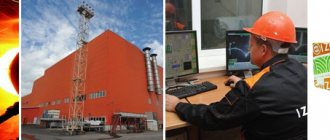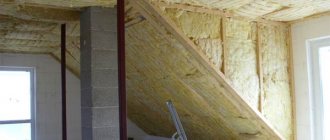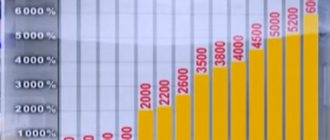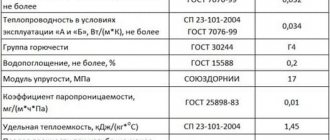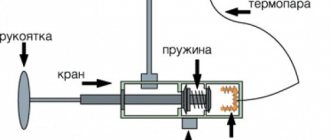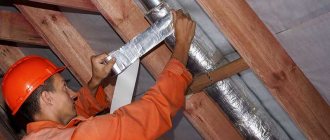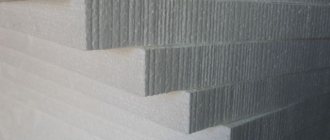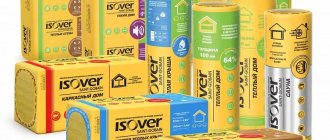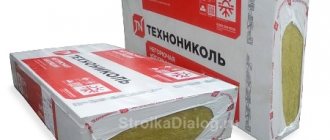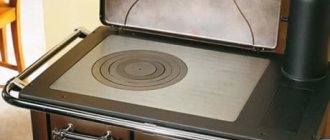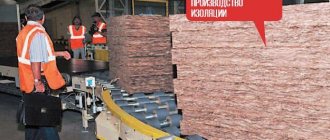offers to buy a wide range of materials, primarily focused on fire protection of premises and building structures. One of the types of products we offer, which combine not only non-flammability, but also high thermal insulation characteristics, are mineral wool slabs with a synthetic binder.
Mineral wool boards of various types are used in construction as insulation and fireproof insulation of roofs, engineering structures and building structures, attics, external walls of buildings, attics. Also, miniplates successfully fulfill the task of increasing the fire resistance of metal support structures.
Scope of application
To make mineral wool, melted glass, blast furnace slag, and volcanic rocks are used. Using a centrifuge, fibers are obtained from the melt, which are mixed with a binder of synthetic origin. From the resulting mass, mineral wool slabs are formed, which vary in size, density and hardness.
Thermal insulation boards made of mineral fibers are used for heat and sound insulation
:
- floors;
- pitched and flat roofs;
- roofs made of three-layer panels;
- floors;
- ceilings;
- partitions;
- three-layer lightweight walls made of block materials (mineral wool is placed in the middle of the structure);
- frame walls;
- facades (when insulated under plaster and as part of ventilated curtain facades).
An example of a wall pie using mineral wool
Areas of use
During the production of mineral wool, blast furnace slag, glass, and rocks of volcanic origin are used. From the prepared melt, processed in special centrifuges, fibers are made, which are then mixed with synthetic-based binders. The mass obtained in this way is formed into slabs that are convenient for use, differing in such parameters as rigidity, density, and overall dimensions.
The resulting material based on mineral fibers is suitable for providing reliable noise and heat insulation:
- three-layer panels, roofing structures;
- floors;
- ceilings;
- roofs of pitched or flat type;
- floor coverings;
- partitions;
- load-bearing strong walls;
- three-layer special walls built from blocks, inside of which mineral wool is placed.
Basic properties
When choosing insulation for a roof, wall structures, floor or ceiling, it is necessary to take into account the thermal insulation properties of the material, its density, resistance to moisture, vapor permeability, and fire resistance.
Mineral wool is characterized by a high ability to protect against cold and noise, and at the same time is one of the budget heat insulators. But before purchasing insulation, you should understand what criteria are used to evaluate its suitability for installation in specific conditions.
Properties and advantages of mineral wool slabs ↑
Factors such as thermal conductivity, vapor permeability, moisture resistance and density are decisive in the choice of material for a particular design. Mineral wool insulation has the best performance among thermal insulation for roofs, attics, and attics. It should be noted that their variety makes it possible to design the surface in the most cost-effective and accurate manner, in accordance with the requirements and needs of the building owners.
Before you buy a heat insulator, you need to understand its main types, areas of application and design features.
The undeniable advantages of insulation ↑
The advantages of using mineral wool slabs include:
- durability, since their service life is at least 50 years;
- excellent noise and heat protection;
- high vapor permeability;
- affordable price;
- ease of marking, cutting, laying;
- low specific gravity, allowing to remove the load on the overall structure;
- powerful indicators of density and strength;
- fire and biological resistance;
- unattractiveness for nesting by rodents and other pests.
Thermal conductivity and fire resistance indicators ↑
Protecting the ceiling space from cold penetration is the main purpose of the blocks. The permissible value of their thermal conductivity is regulated by GOST 4640-2011. Average values range from 0.032 to 0.039 W/(m°C), which is many times superior to many other insulators in terms of heat retention. This property is due to the peculiarities of the porous, fibrous structure of the material.
The non-combustibility of mineral slab insulation is one of the main advantages over other insulators. Shorted wiring or other common causes of fire in the under-roof space are often aggravated by the use of fire-hazardous materials.
The use of cotton blocks is permissible when covering surfaces whose heating reaches +400° and at air temperatures up to +750°. Basalt mineral slabs can withstand up to two hours of exposure to a directed flame of 1000°. However, this property applies only to those products that do not contain flammable synthetic fillers.
Permissible density loads and coefficients of moisture permeability and vapor permeability ↑
The possibility of distributing loads is determined by the density of mineral wool slabs. The higher it is, the more resistant the blocks are to deformation stresses. This indicator for roofing mats ranges from 125 to 200 kg/m3 and characterizes the purpose of the material for a particular structure, in order to maintain its low thermal conductivity and durability.
When purchasing thermal insulation boards made of mineral wool, you should pay attention to their resistance to moisture. The material easily absorbs water, as a result, it reduces its thermal insulation capabilities. To increase resistance to liquid media, manufacturers impregnate the material with water repellents. The level of water resistance is determined by GOST standards; the average value should be no more than 4-7 pH.
In comparison with other insulators, mineral wool insulation has the highest vapor permeability rate - 480*10-6 g/(m*hour*Pa). This property allows the roof to “breathe” freely when using blocks of stone, basalt or glass wool, even with a significant thickness of the material. As a result, the under-roof structure remains dry, fully protecting the structure from mold, rot, and fungus.
Advantages of fiber insulation
Mineral wool boards are characterized
:
- low specific gravity - insulation with this material will not overload the structure;
- high strength (this indicator depends on the density of the slab);
- fire resistance;
- biostability (the material is resistant to decay, unattractive to pests and rodents);
- durability (service life, provided proper installation, exceeds 50 years).
Comparison of thicknesses of materials for thermal insulation
High technical characteristics make the material a market leader in thermal insulation
.
Thermal conductivity
Due to its fibrous structure, slab thermal insulation made of mineral wool provides good protection against heat leakage. Thermal conductivity indicators depend on the type and purpose of the slabs - they are in the range of 0.036-0.042 W/(m•K) at temperatures from 10°C to 25°C according to GOST 4640-2011.
Be sure to read: Izospan: types, characteristics and instructions for use
Fire resistance
Mineral wool is a material with a high degree of fire resistance - such insulation does not ignite from random sparks and does not contribute to the spread of fire. Fiber boards withstand contact with surfaces heated to +400°C and air heated to 750°C.
Non-combustible slabs made of basalt fiber can withstand contact with an open flame (1000°C) for two hours, provided that the material is made without the use of fillers made from flammable synthetic substances.
Density
The higher the density of the block, the stiffer it is and the better it can withstand deformation stresses under load. The following types of mineral wool slabs differ:
:
- soft slab (40-55 kg/m3, grade PM-40 and PM-50);
- semi-rigid slab (60-90 kg/m3, grade PP-60, PP-70, PP-80);
- rigid slabs (100-150 kg/m3, grade PZh-100, PZh-120, PZh-140);
- slabs of increased rigidity (160-210 kg/m3, grade PPZh-160, PPZh-180, PPZh-200);
- hard slab (220-300 kg/m3, grade PT-220, PT-250, PT-300).
Laying slabs with your own hands in the attic
Waterproof
Mineral wool slabs are prone to moisture accumulation. The strength and other properties of the fiber are not affected, but the replacement of air with moisture in the structure of the material leads to a sharp increase in the thermal conductivity coefficient, that is, a deterioration in performance properties. The use of certain fillers allows the material to be hydrophobized. According to GOST, the average water resistance level of insulation should be 4-7 pH.
Vapor permeability
Mineral wool is characterized by the highest vapor permeability in comparison with heat insulators made from other materials. The indicator is 480*10-6 g/(m*hour*Pa). In insulating structures where an impenetrable vapor barrier is not provided (for example, external insulation of walls under plaster) or a gas-permeable membrane is used, insulation with mineral wool makes it possible to maintain gas exchange through the structure, which ensures a favorable microclimate in the room.
Using a vapor barrier to protect against moisture
Mineral wool (mats and slabs, GOST standards, description, application, supply)
Characteristics: Mineral wool (depending on the type of raw material) can have a different fibrous structure, specified technologically: horizontally layered, vertically layered, corrugated or spatial, which expands the possibilities of its use in certain structures.
It is characterized by significant resistance to high temperatures and chemicals. Mineral wool also has excellent heat and sound insulation properties.
Currently, a significant amount of mineral wool is produced, which is widely used in construction. Its areas of application are thermal insulation of walls and ceilings; mineral wool is also widely used for insulation of high-temperature surfaces (furnaces, pipelines, etc.), fire protection of structures and as a soundproofing material in partitions and acoustic screens.
Scope of application: Mineral wool is intended for the manufacture of heat-insulating and sound-proofing products, as well as as a heat-insulating material in construction and industry for insulating surfaces with temperatures up to + 700 °C.
It must be remembered that in products made of mineral (stone) wool on a synthetic binder (phenol-formaldehyde resins) at a temperature of about 300-350 ° C, the process of destruction of the binder begins.
Application:
As unloaded insulation of horizontal, vertical and inclined building envelopes of all types of buildings. In external insulation systems of plaster type. As a thermal insulation layer in suspended ventilated facades. In systems with insulation on the inside of the building envelope. In systems with insulation inside the building envelope (three-layer concrete or reinforced concrete panels, three-layer sandwich panels with metal sheathing, layered masonry). As thermal insulation of industrial equipment, tanks and pipelines of heating networks, main oil and gas pipelines, process pipelines of power plants, metallurgical, petrochemical and other industrial enterprises. As a lower heat and sound insulation layer in multi-layer flat roof coverings, including when laid on a surface without a cement screed. As a heat and sound insulating layer in flat roof coverings, including when laid on a surface without a cement screed. As a top heat and sound insulating layer in multi-layer flat roof coverings, including when laid on a surface without a cement screed. There are a number of documents (GOSTs) according to which the main indicators of mineral wool products are regulated: 1. GOST 9573-96 “Thermal insulating slabs of mineral wool on a synthetic binder” 2. GOST 21880-94 “Thermal insulating mats made of mineral wool” 3. GOST 22950 -95 “Mineral wool slabs of increased rigidity with a synthetic binder. Technical conditions" Most manufacturers currently produce mineral wool according to their own Technical Conditions (TU), these documents prescribe much higher requirements for the insulation produced than those that appeared in GOST.
ADDITIONAL INFORMATION:
Mineral wool mats GOST 21880-94
Heat-insulating mats made of mineral wool GOST 21880-94 are sheets of the finest interwoven fibers of mineral wool, stitched with special fire-resistant threads - roving on any base (lining), or without it.
Depending on the type of covering material, mats are divided into types:
M1 - without lining material;
M2 – on a metal mesh..;
M3 - on fiberglass...
The covering material can be on one or both sides.
Depending on the density, mats are divided into brands: 75, 100, 125 (kg/m?) .
Mat sizes : width 1000 mm, length from 1000 to 3000 mm (standard 2000 mm), thickness from 60 to 100 mm.
Packaging: rolls wrapped in stretch film, ends open.
Specifications:
- High chemical resistance,
- Non-flammable (fire insulation and fire protection),
- Used at temperatures from - 180 to + 700°C,
- Resistance to biodegradation,
- High degree of noise absorption.
Physical and mechanical properties of M-100 mats:
- Density 85-110 kg/m?,
- Thermal conductivity at t 283°K (10°C) 0.036 W/(m*K),
- Compressibility, no more than 40%,
- Elasticity, not less than 75%,
- Humidity, no more than 2%,
- Acidity module 1.38.
products are certified according to GOST 21880-94.
Mineral wool is obtained by melting rocks, without adding any chemical compounds. In the mats it is fixed mechanically by piercing with glass threads and, unlike mineral wool boards, the piercing mats do not contain binder resins containing formaldehyde. Therefore, mineral wool mats were and remain the most environmentally friendly insulation of all that exist today.
The thermal insulation properties of mats, like all mineral wool products, are due to the content of a large number of air pores and channels in them - about 95% of the total volume containing air in a stationary state, the thermal conductivity of which is very low.
Main properties of mineral wool mats:
- Effectively prevent the release of heat into the environment;
- They can withstand high temperatures, even at a temperature of 700°C they do not burn, do not emit any harmful substances into the environment, and do not lose their properties;
- They are not a source of air pollution, which is confirmed by a hygienic certificate;
- They are resistant to microorganisms and rodents (inorganic material is not destroyed and does not provide a basis for the growth of microorganisms);
- The unique combination of elasticity and elasticity allows the mats to take the shape of the surface being finished. Due to the tight fit of the mat to the surface, the likelihood of heat leakage is significantly reduced;
- Insulated structures are made as light as possible. At the same time, their heat resistance does not decrease. In such enclosing structures, the thickness of the load-bearing part depends on the strength of the structural material, and high heat resistance is achieved due to the high thermal resistance of mineral wool mats;
- Do not increase the corrosive aggressiveness of the external environment in contact with metal materials;
- The use of longitudinal strengthening of mats by stitching with roving under conditions of increased vibration load allows them to maintain mechanical and thermophysical characteristics throughout their service life, which reaches 50 years;
- They provide increased sound insulation, which is an important indicator in the construction of buildings.
- The absence of synthetic substances in the component of pierced mats allows the use of pierced mats on objects with high storage requirements or when working with flammable materials;
- Stitched mats are an environmentally friendly “breathing” heat-insulating material that “does not clog” the insulated room; they are used for a long time without destruction.
Application:
- Thermal insulation of pipelines of heating networks, main oil and gas pipelines, process pipelines of various diameters of enterprises of all industries at a temperature of the insulated surface from -180 to 700°C;
- As unloaded thermal and sound insulation of industrial equipment: boilers, steam generators, heat exchangers, turbines, drying cabinets, industrial refrigerators, tanks, pipelines, air ducts, air conditioning and ventilation systems, as well as household appliances;
- As unloaded thermal insulation in industrial and civil construction, and insulation in lightweight frame-type enclosing structures;
- For thermal insulation of internal walls of residential premises, partitions, floors and ceilings, attics, attics, for insulation of panel structures, since they do not contain a binder that evaporates into the environment in the form of toxic gases harmful to the human body. Effectively used for thermal insulation of steam rooms, baths, saunas;
- As sound-absorbing materials of the middle layer in the construction of frame-sheathing partitions, cladding of multi-storey floors, additional sound insulation of ceilings and walls in industrial, civil and residential construction;
- They are used in the manufacture of fireproof structures, sheathing, fire partitions, and as a fire separating layer in three-layer structures.
Mineral wool boards (minslab)
– these are thermal insulation boards made of mineral wool on a synthetic binder with or without water-repellent additives (HFA), intended for thermal insulation of building structures in conditions that exclude contact of products with indoor air, and industrial equipment. Mineral board, as well as mineral wool mats, differs from insulation made on the basis of other materials in that it is resistant to high temperatures and most aggressive chemical substances: alkalis, oils, solvents.
The advantages of mineral wool boards also include the following:
- Low moisture absorption;
- Fire resistance;
- The fibrous structure provides elasticity and high strength to the material;
- Due to its fibrous structure, such a slab is a good sound insulator;
- Durability;
- High thermal insulation properties;
Lightweight and easy to install, easy to cut and lay.
Mineral wool boards have different hardness and density, they are conventionally divided into: soft - density up to 75 kg/m?, semi-rigid - density from 76 to 125 kg/m?, hard - density from 126 to 225 kg/m?, plates of increased rigidity (PPZh), manufactured according to GOST 22950-95 - density from 160 to 225 kg/m?.
Thermal insulation slabs made of mineral wool on a synthetic binder according to GOST 9573-96
According to GOST 9573-96, mineral wool slabs are produced in four grades: 75, 125, 175, 225.
The nominal dimensions of the slabs must correspond to those indicated in the table:
| Brand | Length, mm | Width, mm | Thickness, mm |
| 75 | 1000; 1200 | 500; 600; 1000; | 60; 70; 80; 90; 100; 110; 120; |
| 125 | 50; 60; 70; 80; 90; 100; | ||
| 175; 225 | 40; 50; 60; 70; 80; | ||
| Note - By agreement with the consumer, it is possible to produce slabs of other sizes. | |||
The symbol of the slabs must consist of the initial letter of the product name (P), the brand designation, the dimensions of the slabs in length, width, thickness in millimeters and the designation of this standard.
An example of a symbol for a slab of grade 125 with a length of 1000, a width of 500 and a thickness of 50 mm: P 125-1000.500.50 GOST 9573-96.
Characteristics
Maximum deviations of the nominal dimensions of the slabs, mm, should not exceed: +10/ - 10 in length + 10/ -5 in width +7/ -2 in thickness for slabs of grades 75, 125, 175 +5/ -3 in thickness for slabs brand 225
For slabs of grade 225, the difference in diagonal lengths should not exceed 10 mm, and the difference in thickness should not exceed 5 mm.
In terms of physical and mechanical properties, slabs manufactured in accordance with GOST 9573-96 must meet the requirements given in the table:
| Indicator name | Value for slab grades: | ||||||
| 75 | 125 | 175 | 225 | ||||
| Density, kg/m3, no more | 75 | 125 | 175 | 225 | |||
| Thermal conductivity, W/(m x K), no more, at temperature, K: | |||||||
| 298 +- 5 398 +- 5 | 0,047 | 0,049 | 0,052 | 0,054 | |||
| 0,077 | 0,072 | 0,070 | — | ||||
| Compressibility, %, no more | 20 | 12 | 4 | — | |||
| Compressibility after sorption humidification,%, no more | 26 | 16 | 6 | — | |||
| Compressive strength at 10% deformation, MPa, not less | — | — | — | 0,04 | |||
| Compressive strength at 10% deformation after sorption moistening, MPa, not less | — | — | — | 0,03 | |||
| Water absorption,% by weight, no more | — | — | — | 30 | |||
| Content of organic substances, % by weight, no more | 3 | 4 | 5 | 6 | |||
| Humidity, % by mass, no more | 1 | 1 | 1 | 1 | |||
In terms of flammability, slabs of grade P-75 should belong to the group NG (non-flammable), grades P-125 and P-175 - G1 (slightly flammable), grade P-225 - G2 (moderately flammable) according to GOST 30244-94 and Federal Law - 123.
The amount of harmful substances released from slabs at temperatures of 20 and 40°C should not exceed the maximum permissible concentrations established by sanitary inspection authorities.
Recommended area of application of thermal insulation boards made of mineral wool with a synthetic binder, manufactured in accordance with GOST 9573-96
| Brand of slabs | Application area |
| 75 | As unloaded thermal insulation in horizontal building enclosing structures For thermal insulation of equipment with the temperature of the insulated surface from minus 60 to +400°C |
| 125 | As unloaded thermal insulation in horizontal building enclosing structures As insulation in lightweight frame-type enclosing structures For thermal insulation of equipment with insulated surface temperatures up to +400°C |
| 175 | As thermal insulation in vertical and horizontal building enclosing structures. As insulation in lightweight frame-type enclosing structures. As a thermal insulation layer in three-layer concrete and reinforced concrete enclosing structures (type A mineral wool slabs) For thermal insulation of equipment with insulated surface temperatures up to 400°C |
| 225 | As thermal insulation subjected to load in vertical and horizontal building envelopes. As a thermal insulation layer in three-layer concrete and reinforced concrete envelopes (type A mineral wool slabs). In coverings made of profiled flooring or reinforced concrete For external thermal insulation of walls followed by plastering or installation of a protective covering layer (type A mineral wool slabs For thermal insulation of equipment with a temperature of the insulated surface up to 100° |
Mineral wool slabs of increased rigidity with a synthetic binder (PPZh) according to GOST 22950-95
Mineral wool slabs of increased rigidity on a synthetic binder with water-repellent additives, made from hydromass using wet molding technology (PPZh slabs) are intended for thermal insulation of building envelopes: floors, as well as for insulation of coatings made of profiled metal flooring or reinforced concrete without a screed and leveling device layer, in conditions that exclude contact of products with indoor air.
Nominal dimensions of slabs and maximum deviations:
| PPZh type slabs | ||||||
| Brand | Length, mm | Width, mm | Thickness, mm | |||
| Nom. | Prev. Off | Nom. | Prev. Off | Nom. | Prev. Off | |
| 200 | 1000 | +10 -10 | 500 | +5 -5 | 40; 50; 60; 70; 80; | +5 -3 |
Physical and mechanical characteristics of the PPZh-200 plate:
| Indicator name | PPZh-200 |
| Density, kg/m3 | 200+-25 |
| Thermal conductivity, W/(mK), at average temperature (25+-5)°C, no more | 0,052 |
| Compressive strength at 10% deformation, MPa, not less | 0,100 |
| Compressive strength at 10% deformation after sorption moistening, MPa, not less | 0,080 |
| Mass fraction of organic substances, %, no more | 10 |
| Water absorption,% by weight, no more | 30 |
| Humidity, % by mass, no more | 1 |
In terms of flammability, PPZh-200 slabs belong to group G2 (moderately flammable) according to GOST 30244-94 and FZ-123.
The amount of harmful substances released from mineral wool slabs at temperatures of 20 and 40 ° C should not exceed the maximum permissible concentrations established by sanitary inspection authorities.
Directions for use of PPZh-200
- Thermal insulation work using PPZh-200 slabs should be combined with roofing work . Laying the slabs and installing the bottom layer of the rolled waterproofing carpet must be done in the same shift. The slabs should be laid “on themselves”.
- It is advisable to pre-glue a layer of roofing material onto the slabs, which increases their punching strength and prevents the penetration of bitumen mastic into the thickness of the thermal insulation during roofing work.
- When installing thermal insulation from two layers of slabs, the seams between the slabs must be done “in a separate manner.”
- To obtain a flat surface for the sticker of the waterproofing carpet and to avoid possible damage to it in places where there are differences in heights between adjacent slabs, ledges between them of more than 5 mm must be cut off.
Heat-insulating energy slabs based on basalt wool grade PTE according to TU 5761-001-00126238-00
PTE-40
Application: Used as unloaded thermal and sound insulation in horizontal building enclosing structures. As insulation and soundproofing material in lightweight frame-type enclosing structures. Pitched roofs, frame walls, partitions, ceilings, floors with joists. As a soundproofing material for floors on joists. In three-layer structures in residential, industrial and civil construction. For thermal insulation of equipment with a temperature of the insulated surface from -120°C to +700°C.
Characteristics: Density, kg/m? 35-45; Dimensions, mm 1000 x 500 x 50-200; Thermal conductivity coefficient at 25 °C, W/m? 0.038.
PTE-50
Application: Used as unloaded thermal and sound insulation in horizontal building enclosing structures. As insulation and soundproofing material in lightweight frame-type enclosing structures. Pitched roofs, frame walls, partitions, ceilings, floors with joists. As a soundproofing material for floors on joists. In three-layer structures in residential, industrial and civil construction. For thermal insulation of equipment with a temperature of the insulated surface from -120°C to +700°C.
Characteristics: Density, kg/m? 40-56; Dimensions, mm 2000*1000 (1000 x 500) x 40-150; Thermal conductivity coefficient at 25 °C, W/m? 0.036.
PTE-75
Application: Used as unloaded thermal and sound insulation in horizontal building enclosing structures. As insulation and soundproofing material in lightweight frame-type enclosing structures. Pitched roofs, frame walls, partitions, ceilings, floors with joists. As a soundproofing material for floors on joists. In three-layer structures in residential, industrial and civil construction. For thermal insulation of equipment with a temperature of the insulated surface from -120°C to +700°C.
Characteristics: Density, kg/m? 57-83; Dimensions, mm 2000*1000 (1000 x 500) x 40-120; Thermal conductivity coefficient at 25 °C, W/m? 0.036.
PTE-100
Application: As thermal insulation in vertical and horizontal building envelopes. As insulation in lightweight frame-type enclosing structures. For thermal insulation of equipment with the temperature of the insulated surface: P slabs from -120°C to + 400°C; PTE slabs from -120°C to + 700°C.
Characteristics: Density, kg/m? 84-110; Dimensions, mm 2000*1000 (1000 x 500) x 40-120; Thermal conductivity coefficient at 25 °C, W/m? 0.038.
PTE-125
Application: As thermal insulation in vertical and horizontal building envelopes. As insulation in lightweight frame-type enclosing structures. For thermal insulation of equipment with the temperature of the insulated surface: P slabs from -120°C to + 400°C; PTE slabs from -120°C to + 700°C.
Characteristics: Density, kg/m? 111-138; Dimensions, mm 2000*1000 (1000 x 500) x 40-120; Thermal conductivity coefficient at 25 °C, W/m? 0.038.
PTE-150
Application: As thermal insulation subject to load in vertical and horizontal enclosing structures. As a thermal insulation layer in three-layer concrete and reinforced concrete enclosing structures. As a thermal insulation layer in coverings made of profiled flooring or reinforced concrete. For external thermal insulation of walls followed by plastering or installation of a protective covering layer. For thermal insulation of equipment with a temperature of the insulated surface from -120°C to + 700°C. Fire protection agent for building structures.
Characteristics: Density, kg/m? 139-155; Dimensions, mm 2000*1000 (1000 x 500) x 40-100; Thermal conductivity coefficient at 25 °C, W/m? 0.038.
PTE-175
Application: As thermal insulation subject to load in vertical and horizontal enclosing structures. As a thermal insulation layer in three-layer concrete and reinforced concrete enclosing structures. As a thermal insulation layer in coverings made of profiled flooring or reinforced concrete. For external thermal insulation of walls followed by plastering or installation of a protective covering layer. For thermal insulation of equipment with a temperature of the insulated surface from -120°C to + 700°C. Fire protection agent for building structures.
Characteristics: Density, kg/m? 156-190; Dimensions, mm 2000*1000 (1000 x 500) x 40-80; Thermal conductivity coefficient at 25 °C, W/m? 0.038.
PTE-200
Application: As thermal insulation subject to load in vertical and horizontal enclosing structures. As a thermal insulation layer in three-layer concrete and reinforced concrete enclosing structures. As a thermal insulation layer in coverings made of profiled flooring or reinforced concrete. For external thermal insulation of walls followed by plastering or installation of a protective covering layer. For thermal insulation of equipment with a temperature of the insulated surface from -120°C to + 700°C. Fire protection agent for building structures.
Characteristics: Density, kg/m? 191-230; Dimensions, mm 2000*1000 (1000 x 500) x 40-50; Thermal conductivity coefficient at 25 °C, W/m? 0.039.
Heat-insulating boards of the “TEPLIT” brand according to TU 5762-009-47838590-08
They are used for thermal insulation of a wide range of building structures. They are made from basalt energy wool (VBE) on a synthetic binder with water-repellent additives (HFD).
Thermal insulation boards "Teplit Light Super"
Thermal insulation slabs made of mineral wool on a synthetic binder, hydrophobized, intended for use as unloaded thermal and sound insulation of horizontal, vertical and inclined building envelopes of all types of buildings, including low-rise and cottage types of individual development; for thermal insulation of industrial equipment at a temperature of the insulated surface from -120°C to +700°C.
| Characteristics of "Teplit Light Super" | |
| Density, kg/m?, no more | 25-35 |
| Thermal conductivity, W/mK, no more, at temperature: | |
| 298(+ 5) °K 398(+ 5) °K ?? ?? | 0,038 0,050 0,040 0,043 |
| Compressibility, % no more | 30 |
| Compressibility, after absorption hydration, % no more | 40 |
| Humidity by mass, % no more | 1 |
| Water absorption during partial immersion by mass, % not more than | 35 |
| Water absorption at full immersion by volume, % no more | 2 |
| Content of organic substances, % no more than | 2,5 |
| Vapor permeability, mg/(mchPa), no more | 0,3 |
Our supply of thermal insulation materials details on the website www.tekhnoprom42.rf
List of products: thermal insulation materials: P-75 P-125 P-175 P-225 PTE-40 PTE-50 PTE-75 PTE-100 PTE-125 PTE-150 PTE-175 PTE-200 PPZh-200 Teplit-3K , Teplit-V, Teplit-S, Teplit-sandwich, sandwich panels. Thermal insulation mats are MBPE, MTPE, lined with metal mesh, lined with T-23 fiberglass. Energy cylinders TsTE. Energy cord ShTE.
Mineral wool thermal insulation mats GOST 21880-94 M1 M2 M3 M-75, M-100, M-125.
Basalt heat-insulating mats, pierced grades BSTV, MTB, TIB, MBTV, MPB, MTBZO, with or without lining material. Fireproof products. Dispatch within the Russian Federation, delivery to the buyer, discounts from factory prices.
Subscribe and stay with us:
Last modified: 12/24/2013
The article was posted by Tekhnoprom LLC.
Back to all articles
comments powered by HyperComments
Similar articles
Maintenance of roofs made of polymer membranes: brief instructions Polymer membranes in our country are used for waterproofing roofs on hundreds of thousands of objects.
Suspended ventilated façade system: features of installation and selection of materials High heat losses in residential and administrative buildings have become one of the acute problems in many Russian cities.
Advantages of slab insulation
The mineral plate not only has high performance properties. Due to their structure, the blocks hold their shape well, they are easy to mark and cut to size
.
Soft, semi-rigid, rigid and hard blocks are easy and quick to install - in most cases, the heat insulator is installed directly into the cells of the wall or ceiling sheathing, between roof rafters or floor joists. For external insulation of a flat roof, hard mineral wool slabs are laid in a layer on the prepared surface, and for external thermal insulation of walls under plaster, they are attached with glue and fasteners with “umbrella” caps.
Installing slabs between rafters
The advantages also include the affordable cost of the material.
Be sure to read: Materials for roof vapor barrier: types and purpose
Minslab: types and technical parameters
Mineral fiber mats vary in technical performance as it depends on the following factors:
:
- raw materials used;
- fiber arrangement;
- density.
When choosing a material for insulation, it is necessary to take into account the scope of use of a heat insulator with certain properties
.
Types of slab insulation
There are three types of thermal insulation mats - glass wool, slag wool and stone wool.
Glass wool is the cheapest insulation option. For manufacturing, the same ingredients are used as for glass - dolomite, limestone, borax, sand, soda. The fiber is 5-15 microns thick and 15-50 mm long. Operating temperature range from -60 °C to +450 °C. Glass wool cakes over time and its heat-shielding properties decrease. During installation, fragile fibers break easily, so it is necessary to use protective equipment when working
.
It is also important to properly cover the insulation with a vapor barrier so that glass dust does not penetrate into the room.
.
Slag wool is characterized by low environmental safety, since the raw material for its production is blast furnace slag. For this reason, the material is not recommended for use in internal insulation of residential premises. The fiber thickness is 4-12 microns, length - 16 mm. Slag wool easily absorbs water, so it is not suitable for external insulation of structures
.
Roll of slag wool
Stone wool (basalt insulation) is the most effective and safe heat insulator, since it practically does not crumble during installation, and its particles do not enter the air as a suspension. Stone fiber material is durable and fire-resistant, environmentally friendly if phenol-formaldehyde resin was not used in its manufacture. But the product is highly expensive.
According to the fibrous structure of the miniplate, it can be:
:
- with a chaotic arrangement of fibers;
- with a lamella (perpendicular) arrangement of fibers.
With a lamella arrangement, the tensile strength of the material is higher.
Size range of thermal insulation boards ↑
The most important factor when choosing a material is the thickness of the mineral wool slabs. It depends on the following factors:
- dew point location;
- climatic conditions of the region;
- structural features of the roof;
- load factor;
- thermal conductivity of a given type and shape of blocks.
To avoid complex calculations, you can pay attention to the recommended insulation parameters in different regions. So, for example, in the south of Russia, this figure is 140-170 mm, in the center - 180-230, in the north up to 350 mm with an average heat resistance of the material - 0.04 W / mK.
However, these data are not critical, given that boards whose thickness is smaller or larger may have much lower thermal conductivity, depending on the raw materials from which they are made, the density and arrangement of the fibers.
Almost all manufacturers give useful recommendations regarding the use of their materials in a particular design. In particular, if we consider popular manufacturers, on thermal insulation packages from the ISOVER company, it is recommended to use slabs with a thickness of 30-170 mm for flat roofs, and for pitched roofs - from 50 to 200 mm. KNAUF, when producing wool of higher density, advises to install blocks of 150 mm on any surface and no more.
Thus, the choice of mineral wool insulation, taking into account all of the above, depends on several main factors:
- required thickness of the insulating layer;
- material density;
- thermal conductivity;
- the need for additional membrane layers;
- manufacturing company.
If you are still unsure about the appropriateness of your choice, seek advice from an experienced professional.
Marking
According to accepted standards, mineral wool is marked depending on its density. The same indicator affects the scope of application of the material.
| Type of plate | Brand by density | Abbreviation | Recommended area of application |
| Soft plate PM | 40 50 | PM-40 PM-50 | Unloaded heat and sound insulation of pitched roofs, ceilings, first floor floors, frame partitions. |
| Semi-rigid PP plate | 60 70 80 | PP-60 PP-70 PP-80 | Unloaded heat and sound insulation of pitched roofs, floors, ceilings, internal partitions, light frame structures, three-layer lightweight walls of low-rise buildings made of brick, aerated concrete and other blocks. |
| Rigid plate RV | 100 120 140 | PZh-100 PZh-120 PZh-140 | Heat and sound insulation of walls, incl. facade with a ventilated gap, basement floors on the lower side, three-layer lightweight walls of low-rise buildings made of brick, aerated concrete and other blocks. Thermal insulation layer in three-layer panels for wall and roof structures. |
| Increased rigidity plate PPZH | 160 180 200 | PPZh-160 PPZh-180 PPZh-200 | Heat and sound insulation subjected to load in flat roofs made of profiled decking or reinforced concrete without a cement screed or leveling layer. Thermal insulation of building facades followed by plastering or installation of a protective covering layer. Thermal insulation layer in three-layer panels for wall and roof structures. |
| Solid plate PT | 220 250 300 | PT-220 PT-250 PT-300 | Heat and sound insulation, finishing slabs for ceilings and walls. Thermal and sound insulation subjected to loads in flat roofs made of profiled decking or reinforced concrete without a reinforcing screed or leveling layer. Noise and sound insulation of equipment bases, floors, ceilings, partitions. |
Be sure to read: Review of materials for roof waterproofing
Table. Types of slabs and recommended areas of application
Correct meaning of markings
Current standards and regulations require the separation of mineral wool slabs. Their subspecies are marked with the corresponding marks:
- P-150 insulation is used as sound and heat insulation for roofs and has a high fire resistance rating. The compression ratio is 2%, strength is 0.01 MPa or more, density is 150 kg/m³.
- Semi-rigid slabs are marked with the value PP-125. Their main purpose is to insulate attic structures and pitched roofs. The material has a density of 125 kg/m³ and a compression of 12%, while the thermal conductivity is 0.049 W/mK.
- Rigid heat insulator slabs are represented by brands PPZh-200, PZh-175. The maximum permissible load reaches 175 and 200 kg/m³, making the material suitable for arranging flat roofs that are subject to strong deformation loads.
When purchasing mineral wool, pay attention to its marking - the thickness and density of the material depend on this
Modifications for ease of installation
The creation of a thermal insulation barrier on vertical or inclined structures, the installation of insulating flooring is associated with the arrangement of a multi-layer system, which may include vapor and moisture barriers, and a wind screen.
To simplify the installation of the insulation system, special mineral fiber mats with an additional layer are used on complex surfaces
:
- lamination with polymer film or fiberglass protects the fibers of the heat insulator from being blown away by the wind;
- foiling prevents steam from penetrating into the insulation and helps retain heat in the room by reflecting thermal radiation;
- The outer bitumen layer serves as a waterproofing protection that does not prevent steam from escaping.
Installation of foil-coated mineral slabs
Additional modifications
When creating thermal insulation of inclined and vertical surfaces, a multi-layer and rather complex system is performed, consisting of a wind screen, moisture and vapor barrier.
Mineral wool with foil is great for preventing heat loss as much as possible
To facilitate the installation of such a structure, special mats made of mineral fibers, which are equipped with additional layers made according to the principle:
- laminating - fiberglass or thin polymer film prevents the wind from blowing fibers out of the general layer;
- foiling - preventing moisture from entering the middle of the insulation, heat is retained in the room due to its reflection from the mirror surface;
- creating an external bitumen layer that acts as a waterproofing protection.
Mineral wool boards are universal and multifunctional, thanks to which they have found a huge range of uses. Knowing the basic features and technical parameters, you can independently select a heat insulator for furnishing your living space.
Mineral wool board is a heat-insulating material made from mineral wool and a synthetic binder. Minslab is resistant to high temperatures, and if it is made from natural rocks, they will begin to melt only after two hours of exposure to a temperature of a thousand degrees. In addition, the mineral wool board is resistant to most chemical aggressive substances: alkalis, oils, solvents. Mineral wool (mineral wool) slabs have different hardness and density. Another advantage is the high coefficient of vapor permeability, which allows water vapor to penetrate freely. This helps keep the material from developing moisture, which can lead to the spread of mold and various pests.
The advantages of mineral wool boards also include the following: - Low moisture absorption - no more than 1.5%. - Completely non-flammable. — Ease and convenience of operation. The material does not require special fasteners; it is easy to cut and lay. — The fibrous structure provides elasticity and high strength to the material. — No deformation even under heavy loads. — Due to its fibrous structure, such a slab is a good sound insulator. This quality is very useful in industrial construction, since the sound insulation properties help reduce the thickness of the installed insulation. - Durability. The material performs its functions for up to 25 years. - Environmentally friendly. — High thermal insulation properties.
Use of mineral wool boards
Mineral wool boards vary in degree of rigidity. This is how soft, semi-rigid and hard slabs are distinguished. In construction, semi-rigid and rigid are more often used: the former for thermal insulation of wall partitions, roofs and in multi-layer systems, and the latter for insulation of roofs, facades, and floors. Soft boards are mainly used for thermal insulation of communications.
— Residential construction. Minslab is the most common insulation material for a home; it is used to insulate all parts of a building, including the floor and basement. — Insulation of floors. — Insulation of inter-rafter spaces. — Thermal insulation of the facade. — Insulation of the roof and attic. — Insulation of water supply and heating equipment, as well as plumbing equipment and pipelines. - Industrial engineering.
This material can be used both on newly constructed houses and on those already in use. Today, mineral wool slabs are the safest, most environmentally friendly and effective heat and sound insulator.
Popular brands of mineral slab insulation
To buy a fibrous heat insulator with the required characteristics, environmentally friendly, manufactured in accordance with Russian and international standards, be sure to check the availability of quality certificates.
It is recommended to give preference to reputable brands, which include
:
- Rockwool (heat and sound insulation of the Butts line);
- KNAUF;
- ISOVER;
- Ecover;
- TechnoNIKOL.
Characteristics of façade insulation rockwool
